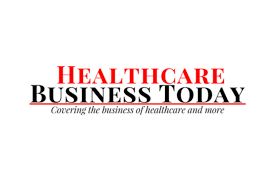By Julie Mann
The recent consumer press and clinical research on electronic health records (EHRs) are, too put it mildly, not great. Apart from being lambasted in Fortune and the New Yorker, the technology has also been linked to physician and nurse burnout, worsening clinician-and-patient relationships and creating twice as much work for providers.
The real problem, however, isn’t solely the EHRs themselves. Rather, as pointed out in these articles, the challenge facing providers is that a single EHR system rarely contains all the information providers need to deliver optimal care. Relevant, actionable data could be in another health system’s EHR, a web-based payer portal, a data analytics application or health information exchange (HIE), to name a few of the many other locations. Technically, a provider can find this information at the point and time of care, but it requires multiple clicks, numerous logins to various other systems; then scanning, searching and toggling between interfaces, causing frustration and contributing to administrative burden.
In light of this realization, healthcare organizations are integrating interoperability platforms that automatically surface this relevant content from many locations to physicians within their workflow at the point of care. At a glance, physicians can identify patients that may be experiencing gaps in care or coding, with quality metrics that are specific to each insurer, internal program, or for any goals. With this contextual insight, physicians can reduce their burden, but still make more fully informed decisions is less time and deliver higher quality outcomes.
Liberating the Data from Silos
To rectify the lack of shared data between organizations, Centers for Medicare and Medicaid Services (CMS) has proposed a new health IT interoperability standard. On its surface, the proposed rule appears that it will improve the efficiency of sharing information between organizations, but it does not address the more important issue of delivering relevant data to providers within their workflow. If enacted, the proposed rule is unlikely to make EHRs more usable and would instead result in providers being even more inundated with irrelevant information, adding to their frustration and reducing the usability of the EHR platform.
Instead, what EHRs need is a bridge that could take that avalanche of data, regardless of where it is from, and automatically surface the meaningful data that providers want to know at the point of care or anywhere in the workflow. That way, the provider would not have to leave their EHR and search in other platforms, which would improve the clinician’s experience, as well as the patients’ who are anxiously waiting to hear what their physician has to say about their health.
Putting Providers in Control
A bridge to relevant data does exist today and is being used by leading health systems and by members of one of the largest closed loop referrals entities in the country. The platform uses patented sensor technology to automatically identify when a provider has logged-in to the EHR, which patient’s chart is open, and their role at the organization. The sensors take advantage of this knowledge and enable the surfacing of contextually relevant information. This reimagined interoperability platform, however, does not require expensive point-to-point interfaces. It is a first-to-market solution to healthcare’s interoperability problem.
Within providers’ workflow, the software gathers predefined information from numerous EHR systems, clinical data analytics platforms and payer portals and then surfaces the relevant information within an unobtrusive ribbon on the screen next to the EHR window – creating visual integration. The data is assured to be meaningful because providers determine before the software’s implementation what information they want to see when they access a patient’s chart. The technology also does not need to be told which patient is being treated because the software’s sensor technology is contextually aware, so it automatically identifies the patient when their chart is opened.
Instead of searching, providers have all the care and coding gap information from the previously mentioned locations in the care continuum, but also from population health management companies, a laboratory or radiology testing company, or a SMART on FHIR-enabled application hosted by a third-party system. For those unfamiliar, SMART (Substitutable Medical Applications, Reusable Technologies) on FHIR (Fast Healthcare Interoperability Resources) is a framework for building healthcare applications to be compatible with any vendor.
Improved Usability Without Radical Change
The implementation of EHRs in healthcare organizations was a massive and disruptive change in the industry, which health systems and providers are still feeling the effects. Rather than another potentially disruptive project such as replacing an EHR, health systems can implement plug-in-play technology that makes their platforms significantly more usable by focusing on context to streamline workflow. Through surfacing only the most relevant, timely information to providers at the point of care within their workflow, more efficient, optimal patient care, at a lower cost and better physician experience can be achieved.
About the author:
Julie Mann – Chief of Commercial Officer:
Julie has spent more than 15 years focused in healthcare information technology, working to deliver innovative solutions that help make the health system work better for all. She has held services and sales roles at organizations from startups to Fortune 500 firms, and from providers to technology companies, equipping her with a unique perspective into customers’ challenges, and enabling her to formulate solutions to meet their needs. Julie leads commercial operations for Holon. Prior to joining Holon, Mann was vice president of regional sales at Optum, where she was responsible for the growth of the Optum Analytics portfolio of technologies and services to the provider market in the northeastern US. Before Optum, she was a regional sales director at Wellcentive (now part of Philips Healthcare). Julie earned her B.S. in business administration and marketing from Le Moyne College, where she was also a captain of the women’s soccer team. https://www.linkedin.com/in/juliemannphm/


